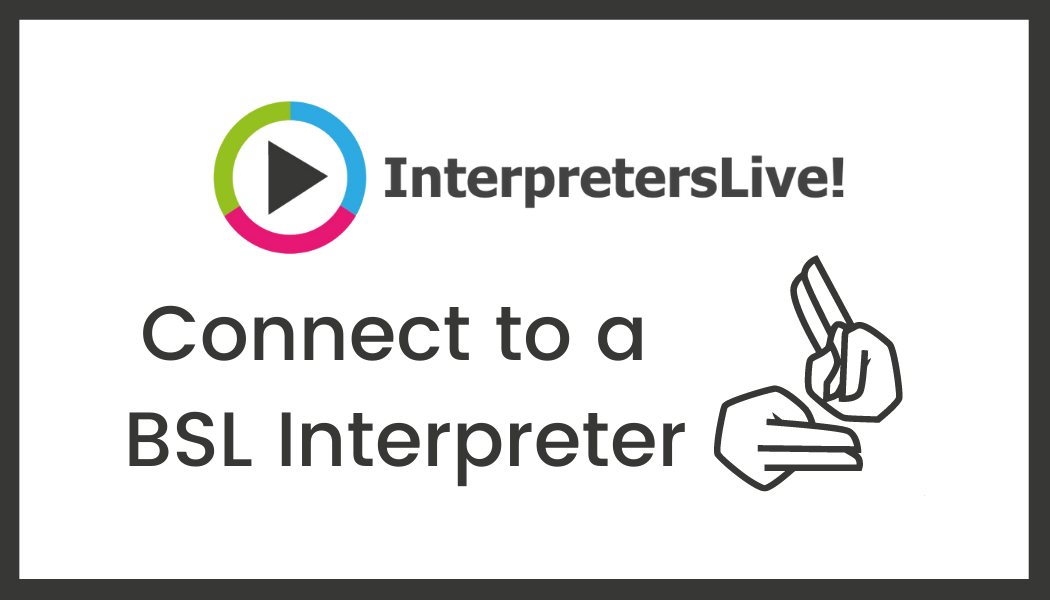BLOG

Bullying is something no-one should have to deal with. While we often associate bullying with childhood, the reality is that bullies can follow people throughout the entire lives, impacting the performance, and culture of workplaces. While conflicts in the workplace are natural, there’s a difference between misunderstandings and clashes among teams, and consistent abuse. Although it’s important for employees to stand up for themselves, and seek assistance when dealing with bullies, HR managers and business leaders also play a role. Direct line managers, supervisors, and executives also need to implement strategies to ensure they’re creating a supportive, respectful company culture. Here’s everything you need to know about overcoming bullying in the sporting space. Defining Workplace Bullying: Identifying the Signs To overcome bullying in the sports, leisure and recreation workspace, business leaders and their employees first need to recognise the signs. Bullying can appear in a range of forms, from name calling, to the deliberate isolation of specific employees by other individuals or groups. However, the Workplace Bullying Institute (WBI) gives the concept a clear definition. It says bullying is any repeated, harmful mistreatment of one or more people by one or more perpetrators. Workplace bullying can happen both offline and online, particularly in today’s world of hybrid and remote work. It can also include: · Name calling or abusive language · Ignoring, isolating, or excluding members of staff · Belittling or making fun of an employee · Scapegoating or blaming other employees for issues · Manipulation or coercion · Spreading rumours about an employee · Aggressive or violent behavior Even business leaders can be perpetrators of bullying, when they set their employees up to fail, disregard them, or overwhelm them with menial tasks. Workplace bullying is extremely common, with 30% of Americans saying they experience this issue in their profession. Unfortunately, the side effects can be disastrous for both businesses and individuals alike. Consistent bullying can cause stress, ill health, and burnout for employees. It also harms team productivity, and increases a company’s chance of talent turnover, leading to significant skill gaps and problems with long-term performance. Handling Workplace Bullying: Global Factors Workplace bullying in the sport industry is an issue that arises all over the world. While the negative impact it has on businesses and employees is consistent wherever you are, the solutions companies and team members can use to deal with bullying vary depending on location. For instance, the UK and Australian governments have both implemented anti-bullying legislation , such as the Equality Act in the UK, and the Fair Work Act in Australia. In these regions, organizations/organisations are encouraged to implement comprehensive anti-bullying policies, outlining unacceptable behaviours, reporting procedures, and consequences for perpetrators. Employees are also encouraged to deliver training and awareness programs, to educate employees about the effects of workplace bullying and how to recognize it. In the US, workplace bullying is addressed through various channels, including legal recourse. While there are no specific federal laws against bullying, many US companies still adopt anti-bullying policies to create a safe and inclusive workspace. Additionally, the US Equal Employment Opportunity Commission shares guidelines team leaders can use to address workplace harassment and bullying. Effective Strategies for Handling Workplace Bullying Though there are different regulations and legal solutions in place for workplace bullying depending on where you are in the world, business leaders can still experiment with a range of universally effective strategies for mitigation, no matter their location. Some of the best ways to combat workplace bullying include: 1. Establish and Share Clear Policies First, it’s important to develop and communicate clear anti-bullying policies for the entire workforce. These policies should outline examples of unacceptable behaviours, as well as the potential consequences for perpetrators. Ensure team members understand which reporting mechanisms are in place to ensure they can seek out assistance if they feel harassed by another team member. All employees should have access to accessible, confidential reporting mechanisms, to help them seek out help without fear. 2. Promote a Respectful, Inclusive Culture Today’s most innovative companies are already investing in Diversity, Equity, and Inclusion initiatives, designed to create equality and respect between team members. This is important at a time when 76% of job seekers and employees believe DEI initiatives are crucial. Promoting a culture of respect and inclusion in the workplace helps to minimise the risk of bullying. Team members should be encouraged to embrace the diverse characteristics of their work mates, and reminded that harassing behavior will not be tolerated. Leaders should set examples, by consistently treating team members with dignity. 3. Invest in Training and Education Investing in educational programs in the workspace isn’t just crucial to give employees access to new technical skills or improve workplace engagement. It can also be a valuable way to promote bonds between team members, and hone soft skills. Consider investing in educational resources that focus on teaching valuable communication, collaboration, and cooperation skills. Provide team members with educational resources to help them understand the effects of bullying, and what they can do to recognise, address, and even prevent the issue. 4. Respond to Reports Correctly Simply ensuring employees in the workplace can report instances of bullying isn’t enough. Companies also need to be willing to act rapidly when an employee is facing harassment. All reports issued by team members should be investigated thoroughly, promptly, and impartially. The consequences for perpetrators should be significant, but also consistent and fair, based on the nature of the situation. Additionally, business leaders in the sport industry should ensure support is available to victims following the event. This could include offering counselling, mediation, or coaching sessions. 5. Stay Vigilant Unfortunately, even as business leaders continue to invest in initiatives to make their companies more welcoming and supportive to employees, bullying is still an issue. In today’s world of hybrid and remote work, it can be even harder to spot problems, particularly when harassment happens online, or through video meetings. To stay on top of the problem, managers and business leaders need to be vigilant about monitoring the workplace environment. Pay attention to the behaviours of employees, investigate instances of severe stress and burnout, and constantly promote team bonding. Workplace bullying is unfortunately a global, persistent issue, that requires attention from both employees, and business leaders. Addressing instances of bullying effectively isn’t just the key to creating a more attractive company culture. It’s also important to ensuring employees can feel engaged and productive at work, and helps to reduce the risk of talent turnover. The right initiatives can even help to make your business more appealing to industry talent.

Level= takes great pride in our recognition for outstanding work in the sports industry at the esteemed Football Business Awards held in London in May. We were honoured to receive the Silver Award in the Equality, Diversity, and Inclusion category. This award is a testament to our commitment to putting diversity at the core of our mission and engagement. We were in excellent company, with notable nominees including Brighton & Hove Albion FC, Aston Villa FC, Chelsea FC, Liverpool FC, and Watford FC. Our purpose is clear: to empower every sports organisation with inclusive recruitment practices designed to eliminate bias and ensure fairness in hiring decisions. We've collaborated on numerous projects with Brentford FC and The Premier League, aligning with their dedication to equality, diversity, and inclusion through our consciously inclusive approach to hiring. By proactively reaching out to diverse communities and employing a debiased process, Level= has increased the representation of underrepresented groups within these organisations. Jon Varney, CEO of Brentford FC, underscores the benefits of our anonymisation process: "We piloted an anonymous recruitment process for several executive roles within the Club. This approach has allowed numerous candidates from underrepresented groups to advance to the final stages and secure full-time contracts with us." Amy Field, The Premier League Policy Department Operations Manager, recognises the limitations of traditional recruitment methods like CV and cover letters: "It's evident that, among the multitude of applications we typically receive, we might have overlooked some candidates based solely on their work history." At Level=, we persistently challenge the conventional approach to bring about positive change in sports recruitment. Our commitment to creating a level playing field for all candidates has resulted in attracting a more diverse pool of talent, all while significantly reducing the recruitment time for dedicated hiring teams. Click here to see the organisations we have worked with

How to Support Anxious Employees Stress and anxiety in the workplace are more common than you might think. Every workplace has challenges that can impact our mental health, from tight deadlines to internal conflicts. These issues can be extremely difficult to handle for employees already suffering from anxiety. 1 in 6.8 people now experience mental health problems in the workplace, and anxiety levels have increased in recent years following the disruption of the pandemic. Business leaders and managers need to know how to support employees suffering from anxiety to ensure they can achieve their full potential, both in and outside the office. Here's everything you need to know about creating a workplace that supports, empowers, and motivates anxious staff.

Working in sports can be a competitive environment. After all, employees want to impress their employer, make a lasting impression on their colleagues, and consistently develop their professional brand. This often means every work environment is filled with people competing for a space in the spotlight. The more time and effort you commit to making yourself stand out in your workplace, the more likely you'll be to earn fantastic recommendations, promotion opportunities, and more. Plus, championing yourself in your role can help increase job security by showing business leaders how valuable you are to the team. In recent years, standing out in the workplace has become more important and complex, thanks to the rise of hybrid and remote working. Around 96% of employees in one study said they believe it's now crucial to maintain "visibility" in the workplace.

Ageism is a form of discrimination that often goes unnoticed, yet it is one of the most experienced forms of discrimination in the UK. As Today's workforce becomes increasingly complex and multi-generational, older workers with decades of experience and expertise are still finding themselves overlooked and undervalued by recruiters and hiring managers. A recent study by 55/ Redefined found that 65% of employees believe the job market is closed to them when applying for roles aged over 55. Since the pandemic, many employers have been reversing their progress on hiring and training older workers , instead preferring to hire and train younger employees. This raises questions about how organisations can overhaul their attitudes to employing older staff and ensure they feel valued and respected in the workplace. Today we look at how to ensure your workplace is age-discrimination free. This will involve examining both your recruitment process and your internal team. There are several audiences involved in the recruitment process. To tackle ageism, let’s begin by talking about actionable ways to improve the supply and demand of older candidates in your recruitment process. 1. Include inclusive language and imagery in your Job specifications Job specifications are an important part of finding qualified candidates, but for candidates, a job specification is an indication of the company’s values and culture, which will be the determining factor in whether to apply for a job. Using terms like fast-paced, active, young, and age-related terminology in a job specification signals that you are looking for someone of a certain age. It implies to candidates that your company lacks an age-inclusive environment, which could deter potentially qualified candidates from applying. This could result in fewer qualified applicants being interviewed, which would ultimately impair your HR team’s ability to fill the position. Therefore, it is important to ensure your job specifications are well written in sensitive, thoughtful, and inclusive language. What language should you use? Use more neutral terms like knowledgeable, dependable , driven, which would appeal to both older and younger candidates Avoid criteria like “recent graduate” and “10 years of experience” as this inappropriately excludes certain age groups and undermines the fact that older candidates have transferable skills. Candidates need to feel that your company is an inclusive workplace that considers all applicants regardless of age, gender, ethnicity, and disability, which will help avoid age discrimination or exclusion in the hiring process. If you don't have a pool of experienced older workers, you may find yourself at a disadvantage. Older employees are a valuable asset to your business and can provide experience and wisdom that younger employees may not have. By recruiting and nurturing talented older employees, you will ensure your business's viability in the future and represent a demographic shift that is rapidly occurring. 2. Assess candidates based on their soft skills, behaviour, motivation, and cultural fit, rather than previous experience and technical fit. It is widely known that when recruiting candidates, the technical fit is a top priority for companies. However, it's important for your HR department to consider their soft skills (such as motivation and behaviour) and cultural fit (whether they'll feel comfortable in your company culture). This way, you're more likely to find the best candidate for the position, regardless of their age. Additionally, adopting a hiring protocol like “hire for culture fit, train for skills” will also help older workers struggling to enter new industries. According to Work/Redefined , 65% of employers will only hire people already experienced in the specific role and will not train a technical role or industry skills for the 55+ age group. This means that HR leaders basing older workers on their soft skills instead of technical fit could help them overcome this barrier. For the first two actionable tasks to work effectively and tackle ageism, there are some things you will want to put in place internally to create an inclusive and age-diverse workplace. Let’s move on to examining your team and the internal side of this conversation! 3. Rain awareness of unconscious bias and encourage your teams to become age-aware. Research has revealed that hiring managers tend to hire people who remind them of themselves which reduces the potential to hire older candidates. This is because it is often difficult for us to recognise age bias in our behaviour and we are often deeply ingrained with old ways of thinking. To ensure that our teams are as age-aware as possible, we need to be aware of our own unconscious biases. This means learning how to avoid age-related biases in the ways that we interact with others. It must be managed effectively in your organisations, from whom you choose to employ, who you choose to promote, which members of the team you ‘prefer’ working with and how members of your team engage with each other. A good way to do this is to implement training on the issue, so everyone is aware of it and ready to respond when they see it happening. By providing the necessary tools and foundations, team members will become aware of their own biases and how they may be affecting their decision-making. This will help them to make more conscious decisions and improve the organization's overall productivity. In order to make change happen, everyone has to be involved. By working together to address ageism, you'll help ensure a safe and inclusive environment for all employees. If you're looking for advice on your training needs, Level= has you covered. We offer diversity, equality and inclusion (DEI) consultancy and training to help your workforces become as inclusive as possible. Click here for more information. 4. Implement programs like Employee Resource Groups (ERG) There is no doubt that ageism is a growing problem in workplaces and can be one of the biggest causes of high labour turnover amongst older workers. One way to combat this problem is through the implementation of Employee Resource Groups (ERGs) . ERGs are groups of employees who come together to share knowledge and resources, and they can be a great way to get older workers involved in the workplace. The enforcement of ERG can help your DEI solutions recognise the intersectionality between generations, age, and other diversity aspects. It can also benefit your company in several ways: It can help address age-inclusion issues across teams. Create an inclusive environment where all members are treated fairly and with respect. Help team members learn about different experiences, cultures and backgrounds, so that they can better understand and appreciate different perspectives. It cultivates and preserves existing diverse talent. 5. Create an anti-discrimination policy Creating an anti-discrimination policy is important not only to protect employees from discrimination but also to send a clear message that age is not a factor in determining worth or ability. Employers who want to be effective in their anti-discrimination policies must have a reporting system in place to identify and address any instances of discrimination. The system should also have a conductive structure that monitors employee behaviour, investigates complaints, and takes appropriate action. The policy should include setting clear expectations for behaviour and consequences for violating them, as well as monitoring training related to age-based discrimination. By taking steps to prevent and address ageism in the workplace, companies can create a more inclusive environment for all employees. 6. Hire a consciously inclusive talent acquisition solution Here at level=, it's our mission to help every sports organisation, regardless of size or scope, bring diversity and inclusion to their leadership and broader teams. Our talent debiased approach and process has resulted in : A 70% increase in applications from ethnically diverse backgrounds A 90% positive average candidate experience 93% retention rate after on year Find out more about how we support employers and help them implement effective ED&I policies that act on inclusion. Contact us here or email hello@levelequals.com . Remember – creating a diverse workforce leads to higher engagement, greater productivity and is better professionally and personally for every member of your team.

We’re living in a world where the demand for talent significantly outweighs the number of available candidates in search of sports roles. More than half of U.K. businesses are experiencing skill shortages, and countless worldwide organisations struggle to fill critical positions. Factors like the Great Resignation, the rise of remote working, and changing employee priorities have made it harder than ever for sports leaders to fill their employment pipeline. In this environment, businesses must access the right support. A specialist EDI recruitment partner with expertise and experience in your industry makes it easier to find the people capable of transforming your team. Here’s how you can identify the right one to work within 2023 Why Sports Companies Need Recruiting Partners Currently, around 80% of organisations say they have difficulty filling positions due to a lack of available skills. As unemployment levels continue to drop, the quest for talent will likely become even more challenging for modern brands. An EDI sports recruitment partner can be the ultimate way to stay one step ahead of the competition and ensure your business can thrive in the years ahead. Companies like ours have spent years cultivating networks which offer extensive access to top talent. We can tap into “passive” candidates who may not be actively searching for new roles. As recruitment experts, we are skilled at positioning businesses to the right candidates by offering help with social media marketing, job description writing, and interview setting. An EDI sports recruitment partner gives your company the extra support to quickly track down the right talent and build a pipeline of available experts. They know where to look for talent and can help your business to appeal to every part of the workforce. How to Choose the Right Recruiting Partner A recruitment expert has the potential to save companies time, money, and headaches in the search for talent. However, the success of your new strategy will depend on your ability to choose the most suitable company for your business. Here’s how to get started. 1. Look at Their Brand Presence Branding and online presence are growing increasingly important to the recruitment landscape. Countless candidates check a company’s “employer brand” before deciding whether to work for them. They’re also increasingly active on digital channels when searching for jobs. Around 90% of candidates now use social media in their job search. To ensure you can adhere to the changing recruitment landscape, you’ll need an EDI sports recruitment partner with an excellent image and a strong online presence. After all, if the company fails to market itself effectively online, it may also struggle to promote your vacancies. Search for active social media pages across LinkedIn, Facebook, and Twitter. It’s also worth looking at how frequently your recruitment team shares thought leadership content and blog posts to support their sector. 2. Prioritise Industry Experience Every industry has its specific nuances to consider when it comes to recruitment. People in the technology landscape are looking for different things from their employers than those in the engineering space. These groups have different messaging, unique priorities, and different expectations. As such, finding a recruitment partner who knows your space is important. A specialist EDI sports recruitment partner will understand your landscape and the kind of candidates you’re trying to reach perfectly. They’ll know how to position your job descriptions, what types of copy and content to use to attract employees, and even where to look for passive candidates. A recruiter with a good knowledge of your sector will also be able to match a specific individual’s skills more easily to the goals and requirements of the role in question. 3. Explore Recruitment Service Options Different sports recruitment partners can offer different kinds of services to their clients. Some work on specifically filling roles as they emerge in the company, while others fill talent pipelines with various candidates. This may even involve reaching out to the 70% of candidates who aren’t actively searching for a new job when you’re hiring. Various recruitment partners can also offer different levels of assistance with the recruitment process. Some can help with writing job descriptions and social media posts, so you can improve your chances of reaching the correct audience with the right language. They may also be able to offer help with your interview and shortlisting process. The level of assistance you need and the extent of the service you’re looking for will help you to determine which partner is right for you. 4. Check Case Studies and Testimonials Reviews and testimonials are an excellent way to get a behind-the-scenes look at the kind of support you can expect from your sports recruitment partner. Your chosen company should have a website to showcase case studies and details about previous client interactions. Look through the messages left by other companies, and find out as much as you can about how happy they were with the speed, accuracy, and guidance offered by the recruitment team. Aside from checking the company’s website, you can also look in other online environments for additional business comments. A recruitment company’s social media pages can be a good place to look for quick messages from happy clients or posts showcasing recent reviews. 5. Speak to the Company First Finally, once you have a shortlist of the sports recruitment partners you might want to work with, it’s worth reaching out and arranging a time to talk. A conversation with your recruitment partner can help you to answer a lot of questions you might have about their service, how much support they can give, and how they’re going to communicate with you in future. Speaking to the recruitment experts also allows you to test their knowledge and expertise and build a rapport for future interactions. A good recruitment company should be ready and willing to arrange a meeting with the stakeholders in your time where you can discuss all of your concerns. Depending on their location, they may offer various forms of communication, such as video conferencing, calling, or face-to-face meetings.




